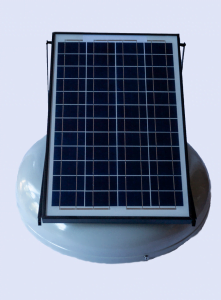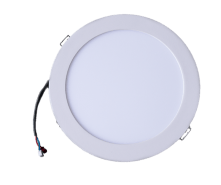Last Updated on August 31, 2024 by Solar Whiz
Solar Roof Ventilation Guide – Which Solar Roof Ventilator is Right for Me?
There are lots of roof ventilation products available on the market. Your options include whirlybirds, tiled vents, fans, powered, and solar powered roof ventilators.
With so many choices it can be difficult to know where to start and what features should be considered over others. This post will hopefully shed some light on the roof ventilation market to help you make an informed decision.
What should I look for in solar roof ventilators?
Don’t settle for the cheapest option. Some powered fans appear incredibly pricey and if you’re not prepared, these upfront costs can be quite confronting. Here are the key factors we recommend you consider when you’re looking for a home ventilation solution.
Brand Reputation
A good first base to start with is going through reviews. Good service and reliable sales can give you an indication of whether a company’s roof ventilator is right for you. Look out for:
- Legacy: Has the company been around for a while? In some cases, they may be veterans of the roof ventilation industry.
- Prevalence: Do they have lots of positive reviews? This means satisfied customers.
- Transparency: Are the technical specifications and information easy to access? Some companies make information difficult to find. The main thing to look out for is real airflow rating—more on that later.
- Technical knowledge: Do the company representatives understand what is required and why in order to achieve optimal ventilation in your home? This includes user accessories (ceiling and eave vents) to ensure enough replacement air is available for the roof ventilator to operate effectively.
Warranty
Make sure the warranty policy suits your needs. You don’t want to get caught off-guard if a roof ventilator needs maintenance or replacement in the middle of a stinking hot summer. Solar Whiz offers 10 years on our PV panels and 2 years on other components.
Anything less, and you’re selling yourself short.
Real Airflow Rating (RAF)
Some businesses will buy wholesale roof ventilators from overseas and give them an airflow rating that suits their marketing needs. There are ventilators that claim to produce 3,000 to 4,000m3/h (cubic metres of air per hour, AKA cbm/h) without having tested the units at all.
It is important to note that all roof ventilators installed under typical roofing conditions will extract less air than their rated airflow capacity. This is because there may be a restricted supply of replacement air. Replacement air enters the roof space via openings such as gaps in corrugations or between tiles, eave vents, or ceiling vents. More openings mean less air resistance as there are fewer barriers preventing air movement through your house. When we refer to real airflow at Solar Whiz, we mean the volume of air that the whole roof ventilator unit can move with unrestricted air supply.
What to ask: Is this the airflow rating of the fan itself, or the complete unit?
Solar Whiz measures the airflow of our units with the fan cap installed. This reduces the airflow reading, but it gives you an accurate extraction capacity, instead of what the units move theoretically. This is also why Solar Whiz doesn’t base its recommendations on roof space volume. Instead, we use guidelines based on square metres and we always assess the availability of replacement air.
Roof Ventilation Accessories
With all this in mind, one last consideration is the accessories that can come with the product. Here are some options that Solar Whiz offers:
- Eave vents: Replacement air is vital for getting the cooling results you need because it lets replacement air into your house as hot air is extracted. A roof ventilator will struggle to work if there’s nowhere for it to draw in cooler, fresher replacement air or if there aren’t enough openings.
Please note: galvanised eave vents are not suitable for installation in coastal or other highly corrosive environments. In these cases you will need to source replacement air from somewhere else. If you need advice, don’t hesitate to call us!
2. Ceiling vents: These are vents installed in the ceiling of a room. That means that they supply replacement air to the Solar Whiz unit from inside the house instead of dragging in outside air. These types of vents are useful if you want to extract hot air directly from rooms.
3. Thermostats (adjustable OR fixed temperature): A thermostat gives you control over when a unit turns on or off. With a thermostat, your Solar Whiz will automatically start ventilating when the air in your roof space exceeds a certain temperature and stop running when it dips below that temperature. Our fixed temperature thermostat is set to 30°C, while the adjustable temperature option lets you choose a temperature between 10°C and 30°C.
4. Constant current module: This accessory allows a Solar Whiz to top up from mains electricity when conditions are not ideal. This is useful if you need the unit to run at full capacity in overcast conditions or overnight. The constant current module allows you to continue to ventilate as long as required regardless of solar conditions. Paired with a thermostat, this ensures your unit stops running when it isn’t needed.
What is the right roof ventilation solution for me?
Make sure you know what you’re looking for when sourcing quotes for roof or solar roof ventilation. Know your budget and how much you’re willing to spend. Also be aware that the more a unit does, the more expensive it is likely to be.
Your house may need more than one unit depending on the size and shape of your house. Other structures in the roof cavity like paritions, dividers and ducting are also likely to have an impact.
House Size
House size is one of the most obvious and important factors to consider. A larger house generally needs more ventilation which means you’ll need a more powerful unit. Some roof ventilator units only offer small amounts of airflow and won’t be powerful enough to have an impact on larger roof spaces.
Solar Whiz offers four distinct residential units and two commercial models. Each provides a different level of airflow, making it suitable to extract heat in homes and spaces of different sizes. In some cases, you may need more than one unit to extract the necessary volumes of air.
Shape of Roof Space
The shape of some houses can make it impractical or impossible to ventilate the whole roof space with one unit. In these cases, using two or more units can help to prevent heat from building up in the parts of your roof space that would not be ventilated successfully by a single unit. Keep this in mind if your house is not a simple square or rectangular shape.
Separate Roof Spaces
If your home has separate roof spaces, or if your roof space has partitions or dividers inside, we can set you up with a tailored solution to meet your ventilation needs.
Gable Mounted Options
Solar Whiz residential units are available as gable-mounted units.
If the pitch of your roof is too steep to fit a roof ventilator, we’ve got you covered.
Flat Roofs and Cathedral Ceilings
Houses with flat roofs or cathedral ceilings generally have little or no roof space. In these situations, heat radiates straight into your living spaces and becomes trapped in your home. A Solar Whiz can be mounted with an extension collar with a closable vent installed directly underneath the unit. This will extract heat directly out of your home, without ruining the look of your ceiling!
We work with you to achieve the desired ventilation results you need to keep cool.
Budgeting
How Quickly Does it Pay Itself Off?
Cooling your home with an air conditioner without the accompanying solar roof ventilation is a losing battle. You’ll spend more money trying to actively cool down a house that has heat trapped in the roof. Heat trapped in the roof radiates down through the ceiling into the living space, making your air conditioner work even harder.
Calculations & Citations
Canstar Blue 2018, How Air Con Temperature Settings Impact Costs
N/A 2018, Appliance Calculators: Air conditioning calculator
We base our mathematics on ducted air conditioners, running at 6.0kW, 21°C at 8 hours per day, 22 weeks per year. This averages out to $599.42 (AU) 20% of 599.42 equals $119.88.
This is a rough estimation, and not to be taken as an example. This can be affected by variables we haven’t taken into account such as ambient temperature indoors and outdoors, airflow, or daylight hours.
All prices are reflective of rates as of 19th December 2018 and are subject to change according to rates. Consult your energy provider for rates indicative of when you are reading.
One of our dealers suggests that there is a 20% efficiency gain for ducted air conditioning systems. Assuming you set up an SW-AU-R-15, a single unit under optimal conditions can help shave off nearly $120.00 per year on A/C usage. This is the result of preventing heat in your roof space from penetrating ducting or radiating through your ceiling.
However, it doesn’t stop there. When you install a Solar Whiz the amount of heat radiating down into your home will be dramatically reduced. As the heat gain is reduced, you can also expect to run your A/C 25% less often.
A Solar Whiz SW-AU-R-15 could pay itself off in roughly 5 years, relying solely on solar power.
Avoiding Budget Roof Ventilators
You can find budget roof ventilators at your local hardware warehouse. These can be tempting solutions for roof ventilation because they are so inexpensive to buy. However, as we’ve talked about in this post, it is highly unlikely that they will achieve the results you need.
There are very good reasons why every solar roof ventilation company tells you not to buy one. The patent for whirlybird designs is over 100 years old!
Budget roof ventilators can be as cheap as $100 – $200 and can be installed by any competent handyperson. These are attractive to many consumers as they are affordable and promise to pay themselves off. But, cheap units can use incredibly poor-quality materials and components in order to scrimp on manufacturing costs for profit. Cheap aluminum or tin roof whirlybirds are prone to hail damage and provide very little airflow. Read our article on why roof whirlybirds suck to learn more.
Cheap components that are likely to break down quickly include:
- Motors: A roof ventilator without a powerful motor and well-designed fan blades won’t be effective. Poor-quality motors may run well initially but are prone to breaking down or moisture damage. Without a good warranty to cover the motor, you’ll be left in a hot spot during the summer.
- Fan blades: Fan blades can be made of acrylic, various types of plastic, or cheap metals. Some are effective, but others may warp under heat or stress. Once again, the design and choice of materials are important. Metal blades are more likely to lose their shape and generally produce more noise.
- Flashing: Poorly designed flashing can result in water leaking into your roof space and causing serious damage. It is important not to overlook the role of properly fitted flashing
- PV panels: The solar panel wattage determines how much power can be supplied to the motor and therefore the capacity of the roof ventilator. Ensuring that the PV is mounted at the correct angle to get maximum sunlight is also important. A flat panel mounted directly on top of the unit means that the unit can only perform efficiently for a couple of hours each day, provided it is facing north. Adjustable panels like ours ensure that a unit can run at optimum capacity for most of the day. Poor-quality PV panels can also be fragile or wear down quicker under the elements.
- Powder-coated mild steel components, which are at high risk of rusting – we use stainless steel (SS304 – and optionally Marine grade – SS316) – or for the fan caps powder-coated aluminium.
- Cheap fasteners will rust and make any future maintenance or repairs very difficult – all Solar Whiz fasteners are Marine grade (SS316)
Solar Whiz offers Aussie-made and designed units with tried and tested components. We are constantly developing and testing our units and components to make sure we are providing quality products that can withstand the harsh Aussie climate.




